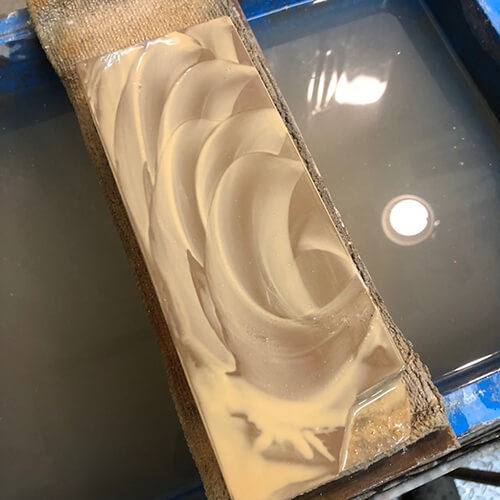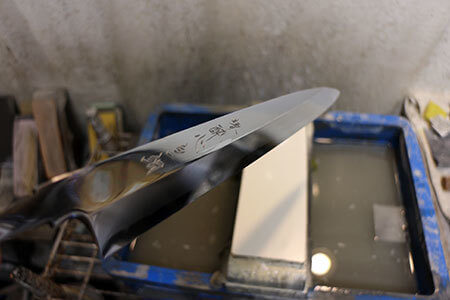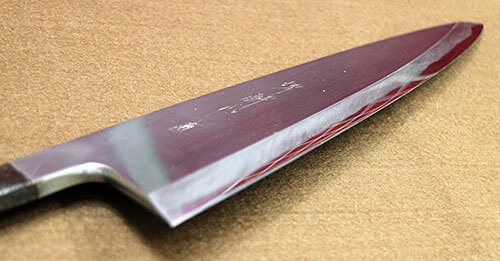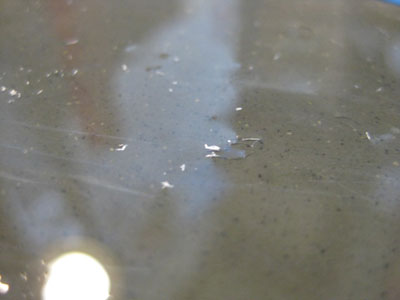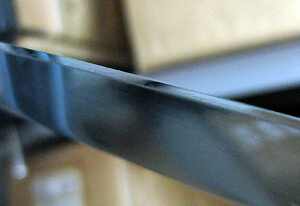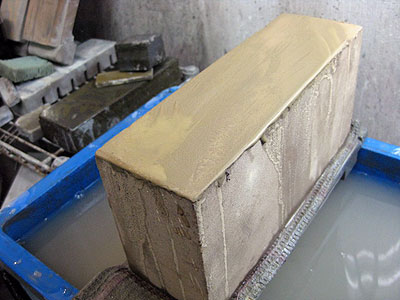With a whetstone that cannot be sharpened!
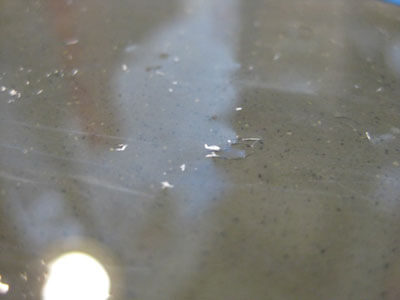
I recently worked on sharpening a sturdy stainless steel gyuto (chef’s knife) and a paring knife from a home utility set. While these knives typically come with a good factory edge, this particular batch wasn’t quite up to par. Sending them out to the customer as is didn’t feel right, so I saw this as an opportunity for a little experimentation and demonstration.
The focus was on aligning the edges of the paring knife, so I didn’t thin out the blade much. However, to achieve a crisp edge, it was essential to remove some of the factory edge. I began with a #2000 grit whetstone, roughly sharpening the blade to eliminate the existing convex edge. Then, for the finishing touches, I used a finer stone to refine the edge and remove any remaining convexity.
The process was akin to removing a thin layer, almost like peeling aluminum foil. It didn’t require excessive grinding force. I decided to shift from my previous preference for high-grit stones like the Super Cerax #3000 or Kitayama. Instead, I opted for a naturally abrasive stone with lower polishing power, specifically selecting a hard Daishiro stone. I focused on grinding in one direction only, considering the sole objective of removing the convex edge.
With a simple technique of pushing on the front and pulling on the back of the blade, I repeated this action a few times. Gradually, the convex edge began to flake off, leaving behind a more refined edge.
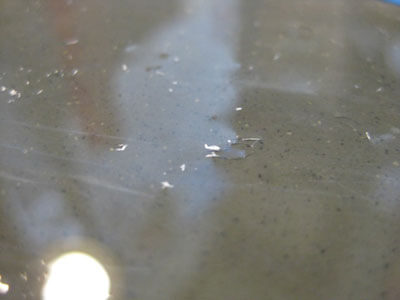
The photo shows the convex edges that flaked off onto the whetstone. Depending on the situation, some convex edges can be stubborn to remove. In such cases, gently rocking the blade back and forth while pulling from the backside makes a fun and effective technique to clear off the remnants.
The key to this sharpening technique is to bring out a pronounced convex edge, especially around the medium grit (#2000) whetstone. Use stones with lower abrasion power, like natural whetstones or King G-1, and avoid vigorous grinding. Interestingly, even with low abrasive power, if you consciously engage in the sharpening process, the convex edge tends to emerge.
Stainless steel and similar alloys possess a certain resilience, making it a challenge to eliminate the convex edge straightforwardly. The more you exert effort with highly effective stones, the more likely a new convex edge will form, leading to an endless cycle.
Regarding the sharpening angle to achieve a consistent convex edge, especially in the case of double-bevel gyuto knives, align the angle on the front side with the angle achieved on the medium grit stone. On the back side, tilt the knife slightly, aiming for a slightly steeper angle, approaching a single-bevel style. The question often arises on how steep the back angle should be. Exploring different angles, gradually increasing from a lower angle, surprisingly results in the convex edge flaking off in a satisfying manner.
While starting with a higher angle is an option, experimenting with angles helps understand the steel’s critical threshold. Today, I delved into the essential blade edge treatment needed for efficient cutting.
hibishugyo
- 2012-08-31
